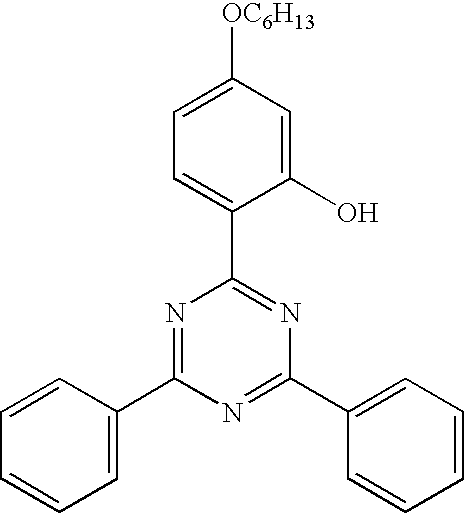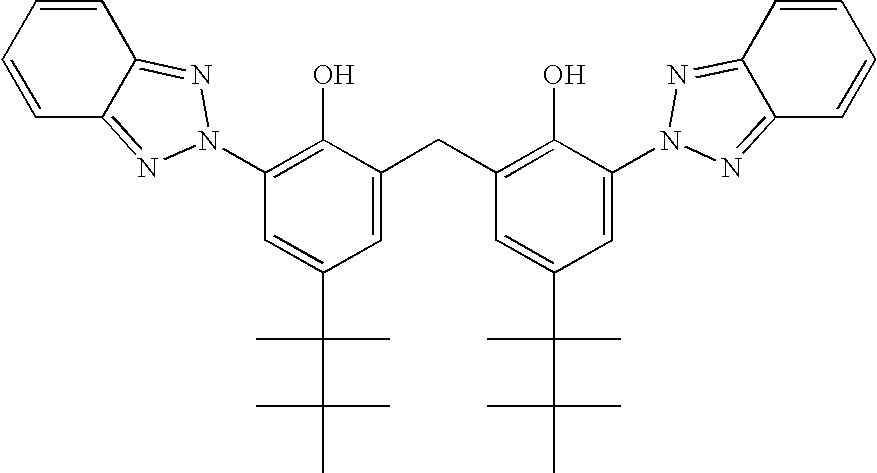Matt, thermoformable, IR-reflective polyester film
a polyester film, thermoformable technology, applied in the direction of filament/thread forming, domestic applications, lamination, etc., can solve the problems of unsuitable thermoform process films, uncontrolled optical properties of films, inadequacies in longitudinal and transverse mechanical properties, etc., to achieve good longitudinal and transverse orientability, good thermal insulation effect, and good thermal insulation
- Summary
- Abstract
- Description
- Claims
- Application Information
AI Technical Summary
Benefits of technology
Problems solved by technology
Method used
Image
Examples
example 1
[0119]A monofilm was produced and comprised polyethylene terephthalate as a main constituent, 20% by weight of MB1, and 5% by weight of MB2.
[0120]The standard viscosity SV (DCA) of the polyethylene terephthalate was 810, corresponding to intrinsic viscosity IV (DCA) of 0.658 dl / g, its diethylene glycol content being 2.5%, and its isophthalic acid content being 8.0%.
[0121]A mixture comprised of 75% by weight of polyethylene terephthalate, 20% by weight of masterbatch MB1 and 5% by weight of MB2 was charged at room temperature from separate feed vessels into a vacuum dryer which traversed a temperature profile of from 25 to 130° C. from the charging time to the end of the residence time. During the residence time of about 4 hours, the raw material mixture was stirred at 61 rpm.
[0122]The precrystallized or predried raw material mixture was after-dried in the downstream hopper, likewise in vacuo, for 4 hours at 140° C. The extrusion process described was then used to produce a single-la...
example 2
[0123]By analogy with Example 1, a film of thickness 75 μm was produced. Modifying Example 1, the film comprised 45% by weight of polyethylene terephthalate, 20% by weight of MB1, and 5% by weight of MB2, and also 30% by weight of recycled material directly associated with the process.
example 3
[0124]By analogy with Example 1, a film of thickness 75 μm was produced. Modifying Example 1, the film comprised 55% by weight of polyethylene terephthalate, 20% by weight of MB1, and 5% by weight of MB2, and also 20% by weight of MB3.
PUM
| Property | Measurement | Unit |
|---|---|---|
| wavelength | aaaaa | aaaaa |
| wavelength | aaaaa | aaaaa |
| thickness | aaaaa | aaaaa |
Abstract
Description
Claims
Application Information
 Login to View More
Login to View More - R&D
- Intellectual Property
- Life Sciences
- Materials
- Tech Scout
- Unparalleled Data Quality
- Higher Quality Content
- 60% Fewer Hallucinations
Browse by: Latest US Patents, China's latest patents, Technical Efficacy Thesaurus, Application Domain, Technology Topic, Popular Technical Reports.
© 2025 PatSnap. All rights reserved.Legal|Privacy policy|Modern Slavery Act Transparency Statement|Sitemap|About US| Contact US: help@patsnap.com



